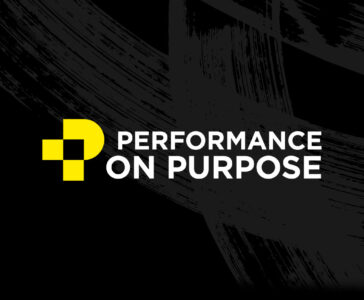As I wrote a few weeks ago, core values have grown stale and irrelevant for many organizations in today’s corporate world. With how much impact values can have on culture and results, this is a shame.
So how can organizations create values that engage and incentivize their employees instead of causing them to roll their eyes?
This question has become a key focus of Fathom’s consulting in recent years and here are some key steps we’ve found make a big difference in crafting values that are meaningful and can shape your culture:
1. Realize that values are discovered, not set
A mistake that many organizations make is to create a list of values that they hope for or aspire to make real. To be effective, though, values must be authentic and reflect the best of what is already true within your culture – they cannot be plucked from thin air and force fed into your organization. As Jim Collins said in his in his article, Aligning Action and Values, “Core values are not something people “buy in” to. People must be predisposed to holding them. Executives often ask me, ‘How do we get people to share our core values? ’You don’t. Instead, the task is to find people who are already predisposed to sharing your core values. You must attract and then retain these people and let those who aren’t predisposed to sharing your core values go elsewhere.”
2. Involve a broad cross-section of employees
To jump start the effectiveness of values, we’ve found that it’s critical to include a number of contributors in their creation, from various segments and diverse levels of seniority within the organization. This approach helps ensure that the values are relevant to what your broader team does every day.
For example, we worked with Kaman Corporation in recent months to develop their values. The process started with a survey to more than 4,000 of their employees. Then, to deepen insights, the team conducted focus groups with more than 300 participants and 1:1 interviews with the senior leadership team. Though this discovery work, a clear and consistent set of ideas emerged and became the basis for the five core values of the company. With this approach, participants from across the company could clearly see how their contributions were included in the core values that were identified. We’ve found that when employees feel included and heard, the values are much more likely to be embraced and lived day-to-day.
Kaman’s employees take pride in where they work and their spirit is captured in this video we developed earlier this year.
3. Make them unique to your culture
Naming values like Accountability or Transparency is great, but can also be too vague and open to interpretation. We’ve found that grounding the values with supporting explanations makes them more clear and actionable. Ideally, this supporting copy will also convey some of your organization’s personality and include relatable examples.
Goldman Sachs provides a great example of values that convey the personality of the organization. Goldman’s business principles and standards include phrases like “our business is highly competitive, and we aggressively seek to expand our client relationships” and “the dedication of our people and the intense effort they give their jobs.” These phrases convey Goldman’s unique culture and make it clear what being a part of the firm is like.

By contrast, Zappos’ Values include phrases like “Deliver WOW Through Service,” “Create Fun and A Little Weirdness” and “Be Humble.” Clearly, working for Goldman is quite different from Zappos and the type of person that will thrive in each culture comes through in their values language.
4. Roll them out with purpose
To demonstrate how important the values are and will be to your organization, its important to roll them out dramatically.
A prime example is Starbucks. When the company was struggling in the depths of the recession in early 2008, Howard Schultz stepped back in as CEO. As detailed in his great book Onward, Schultz and his team had the fortitude to respond to this historic threat to their business by reconnecting to and refining the values that helped make them great in the first place. The Starbucks team quickly worked to articulate their guiding principles and then, flew 10,000 of their team members to an amazing relaunch event in New Orleans (see highlights in this video).
After this launch event, the company retrenched and within two years, was back to record-setting results.
5. Reinforce and act on your values
After all this ground work, the only way to make your values meaningful over time is to act on them. This includes hiring candidates who align with the values, recognizing and rewarding great examples of living your values, and critically, sacrificing for them, when necessary.
When star or senior employees act in ways that violate your values, you must move them out. One company that walks this walk is Netflix. As showcased in their values presentation linked below, Netflix assesses performance against their values and for those who don’t live these ideals, they offer a “generous severance package.” When faced with critical business decisions, you may also need to go through financial pain to truly live your values.

As Starbucks was going through the challenging time mentioned above, they took decisive action in early 2008. Among the many problems they faced was a decline in the quality of the espressos they were serving. For a premium brand, this was a killer.
To address the issue, Schultz and his team decided to shut down all 7,100 of their retail stores at the same time and retrain over 135,000 baristas on how to pour a perfect shot of espresso. This cost them $6 Million at a time when their results were tanking. However, within weeks, their quality scores were significantly up and morale also got a boost.
6. Celebrate Values Heroes
Finally, to reinforce your values and create role models for other employees, it’s crucial to regularly celebrate employees who exemplify the values.
Rackspace does a great job of showcasing their commitment to Fanatical Support by rewarding employees with a straight jacket that is visibly displayed in their workspace. They also produce compelling videos highlighting these individuals, including a recent profile on a “Fanatical Support day in the life” of one of their support representatives, David Corn.
This provides an example to employees, but also is a great message to send to customers and potential customers, too.
Getting Started
If you’re saying to yourself this all sounds like a lot of work, you’re right. It is.
However, as business guru Peter Drucker famously said, “culture eats strategy for breakfast.”
Well-crafted and lived values are the foundation for a strong culture. In turn, a strong culture is the foundation upon which business growth and enhanced profitability are built. It’s time to get building.

Fathom has created the Crafting Meaningful Values for Your Organization Workbook which provides a clear, comprehensive process for identifying the ideals that shape your organization’s daily actions and interactions, and form the basis for your long-term stability.
Want more from Fathom?
Sign up to receive updates about our articles.


